While Australia and the USA shared a muscle car heritage dominated by V8s, the structure behind the two industries was driven by very different motivating factors. The American scene had some links to motorsport via NASCAR, Trans Am, and drag racing. However, it was, in large part, driven by a unique type of oneupmanship that revolved around increased engine capacities and rising power outputs. The Australian scene, by contrast, was almost entirely driven by competition success utilizing the “win on Sunday, sell on Monday” mantra. The intense drive for success saw the Australian industry produce cars like the giant-killing 6-cylinder Holden Torana XU-1 and the V8 Torana L34, the Valiant Charger E38 and E49, and classics like this 1971 Ford Falcon GTHO Phase III. This particular car is not for sale, but it has the potential to be the most valuable Australian production car ever built. So let’s sit back and not only say a big thank you to Barn Finder EoinDS for referring the GTHO to us but let’s find out what makes this one unique.
To understand what makes this Phase III so special, we need to understand what drove its creation in the first place. Ford Australia has had a history of jumping in and out of motorsport for decades, but during the late 1960s and into the early 1970s, they were involved in the sport up to their necks. Ford (along with Holden and Chrysler Australia/Valiant) focused almost entirely on success in the annual 500-mile race conducted on Mount Panorama at Bathurst. Victory in that race earned manufacturers’ bragging rights and massive press exposure. It was also proven to boost sales numbers for the winning manufacturer. Ford’s first V8 contender was the Falcon XR GT, powered by the company’s sweet little 289ci V8. This was the car that was the catalyst for Australia’s muscle car industry, and it scored a win at Bathurst in 1967 to cement its place in Australian folklore. Each successive version of the GT featured a larger engine and more power, and by the time our feature car rolled off the production line, its engine bay was occupied by a 351ci Cleveland V8. This car is an original survivor that is completely unrestored. Virtually nothing has been changed since the day that it rolled out of the showroom, although a previous owner fitted it with a key-operated alarm system some years ago. This involved drilling two holes in the front fender for the key mechanisms, and these are visible in the above shot. The other change that our eagle-eyed readers might notice is the wheels. Every Phase III that rolled off the production line was fitted with 14″ x 6″ five-slot steel wheels. The racing regulations that governed participation in the Bathurst 500 demanded that the production items had to be used. The steel wheels weren’t the best alternative, but the Falcon GTHO Phase IV was going to address this shortcoming with some unique 15″ x 7″ Globe alloy wheels. However, the “Supercar Scare” of 1972 saw the Phase IV dropped before production could commence, but Ford was left with all of these alloy wheels that they didn’t need and wanted to dispose of. The answer was to offer them to the owners of the existing Phase IIIs, and the original owner of this car accepted that invitation. This car not only has a complete set of five of these alloy wheels, but the original set of steelies are also present. Anyway, those are the only changes that have ever been made to this Falcon, and it has also never undergone any form of restoration work. All of its steel is original, as is the Ultra White paint. That makes it a rare beast, but the fact that its odometer reads a genuine 12,817 miles seals the deal. This is the lowest-mileage unrestored GTHO Phase III known to exist today. With restored vehicles now commanding prices well beyond $1.1 million, the two million dollar estimate has some credibility.
While the Falcon XR GT had been a good starting point for Ford’s involvement in performance cars, Bunkie Knudsen, the President of the Ford Motor Company, wasn’t that impressed. He placed pressure on Ford Australia’s Managing Director, Bill Bourke. Knudsen wanted the company to have its own muscle car offerings, and he wanted them immediately. Mr. Bourke saw that Bunkie was serious, so he enticed Al Turner away from the Lincoln-Mercury drag racing program to move to Australia and establish Ford’s Special Vehicle Operations (SVO). SVO operated out of an unassuming workshop located at Lot 6, Mahoney’s Road, in Thomastown, Victoria. The workshop had no company branding, but there were two important characteristics about it. The first was that it was within a stone’s throw of Ford’s production facility, and the second was that access was strictly by invitation only. SVO got its head down developing vehicles, and it appears that Bourke was playing for keeps with the program. He gave Turner a blank cheque to develop what was required, and he gave him a year to achieve success. Turner arrived at Lot 6 in the middle of 1968, and in 1969, the first edition of the Falcon GTHO appeared on the showroom floors. Turner took these cars to Bathurst that year, but a bad decision on tire supply saw them snatch defeat from the jaws of victory. The following year saw this weakness eliminated, and the GTHO Phase II walked away with the prize in the hands of legendary ex-pat Canadian Allan Moffat. While the “HO” part of the GTHO designation was believed to stand for Handling Option, Turner’s focus was not on that area of the car. With his background in drag racing, he thought that horsepower was king. That was why the original XR GT was fitted with the 289ci V8, and its successor sported the 302ci Windsor. Once Turner arrived on the scene, those engines were consigned to the pages of history. The first GTHO rolled off the line with the 351ci Windsor under the hood, while the Phase II and Phase III featured ever-more-powerful versions of the 351ci Cleveland motor. Ford offered the standard Falcon GT with a “warm” version of the Cleveland, but its power output was claimed to be 300hp. The engines for the HO versions received a multitude of upgrades, and it was widely acknowledged that their output was getting close to 400hp. So, the “HO” designation probably had less to do with the vehicle’s handling traits and more to do with the V8’s High Output credentials. Our feature car has already established its credentials as a low-mileage survivor, but it does have a further ace (or two) up its sleeve. Ford produced 300 examples of the Phase III, and this car carries the designation “199.” That is significant because cars 198 through to 205 were sent directly from the Ford factory to the Lot 6 workshop. These cars were destined to be prepared as race cars for Ford-affiliated racing teams. The racing rules at the time were pretty tight, with the vehicles having to be essentially raced as-built by the manufacturer. The major freedoms revolved around the use of shocks, tires, and brake lining materials. Otherwise, every nut and bolt had to be as it left the factory. This didn’t leave teams much room to move, but it did allow for the blueprinting of components. The HOs that found their way to Lot 6 had their engines pulled and disassembled, and these were then blueprinted to extract the last ounce of performance allowed within the rules. These motors were known as “QC” engines, and it is no surprise that this car has one of those engines under the hood. A mere handful found their way out of the workshop for racing use, and it is believed that less than six found their way into road cars. For Australian Blue-Oval enthusiasts, they are the Holy Grail of engines, and the presence of one in this car adds enormously to its desirability. As a sidebar to this story, the GTHO Phase III went to Bathurst in 1971 and demolished the opposition. They secured four places in the top five and completely locked out the podium. Al Turner had delivered what had been asked of him.
Our American readers might find it curious that the Australian muscle car scene firmly focused on four-door family sedans. This was partly because these cars were the volume-selling vehicles in what was a relatively small new car market at the time. Holden had experienced some success with its two-door Monaro, but it didn’t sell in the sorts of numbers that its sedan counterparts did. That meant there weren’t sufficient sales volumes to justify the development of such cars during this period, although this changed for a while during the 1970s as Ford produced the Falcon Hardtop, while Valiant offered the giant-killing Charger, and Holden resurrected the Monaro two-door. However, the racing rules tended to be the driving factor, which is why the Falcon GTHO and cars like the Holden Torana L34 became the focus for each manufacturer. The regulations decreed that the vehicles had to be production vehicles, and deriving these from sedans offered the most cost-effective solutions. Mind you, the interiors of the road cars weren’t poorly equipped by 1971 standards. Standard equipment included front bucket seats upholstered in vinyl, along with a console, a rim-blow wheel, an AM radio, and a comprehensive set of gauges with a speedometer that read to 140mph. There was also a splash or two of faux walnut trim and a “GTHO” designation on the glovebox door. This interior is unmolested, and it still presents exceptionally well for a car with five decades under its belt. Slipping behind the wheel would be like falling back in time. Still, you have to imagine that with vinyl upholstery and no lateral support from the seat, a driver would be feeling pretty tired after 500 miles around the twisting Mount Panorama circuit held in place by either the standard seatbelt or, at best, a four-point harness. As one final sidebar, the 140mph designation on the speedometer was not a case of manufacturer optimism. The 351 in the Phase III was fitted with an electronic limiter that cut in at 6,150rpm. With the limiter intact, the Phase III could hit 142mph. If an owner disconnected the limiter, that Cleveland would sing its way to 7,000rpm in every gear. The result was that it could roar beyond 160mph. When it was released, the 1971 Ford Falcon GTHO Phase III held the mantle as the fastest four-door production sedan on the planet. Not a bad effort when you consider that it was developed in a small workshop in a Melbourne suburb.
I couldn’t resist including this photo because it is almost enough to make some of our Australian readers weep. When the original owner purchased this Phase III back in 1971, it cost him the princely sum of $5,250 plus on-road costs. Under normal circumstances, its value would’ve dropped as subsequent versions of the GTHO rolled off the production line. However, this was not to be. Ford was in the midst of developing a Phase IV that would debut with its new XA Falcon model, while both Holden and Valiant were following the same path with their eyes on the Bathurst prize. The Phase IV would’ve been a production sedan capable of topping 160mph, while the offerings from the other manufacturers would have been no less impressive. However, motoring journalist Evan Green exposed these cars in an editorial piece in early 1972. With the “blood on the bitumen” approach that can accompany such articles, he floated the idea of inexperienced drivers getting their hands on these vehicles. The government became involved, and threats were made to tear up supply contracts with any manufacturer who continued this development. Supplying cars to government departments was big business to these companies, so the “Supercar Scare” saw the new GTHO quietly dropped. However, it proved to be a windfall for the owners of existing vehicles because it reversed the devaluation trend that had been typical for these cars. So, the original owner of this car decided to part with it in 1979, and this was the advertisement that he placed for it. He refused to be low-balled by potential buyers, and he eventually received $15,000 for the car. For those of us who remember those days, we can only wish that we’d had that sort of money in 1979. It would have made this car one fantastic investment.
Today, the Australian vehicle manufacturing industry is a fading memory. However, this 1971 Ford Falcon GTHO Phase III was a shining light in an automotive era that was all too brief. For Ford enthusiasts Down Under, this is a unicorn. It is the sort of car that is dreamt about and of which there are rumors, but no one knows whether they really exist. Well, exist this one does. A restored Phase III recently sold for a record A$1.15 million at auction. This one isn’t restored. It is original, it is unmolested, and it is a proven low-mileage survivor. With only 300 examples having rolled off Ford’s production line, that already made this a rare car. However, its engine pushes its desirability to new heights. That’s why this could be Australia’s first $2,000,000 production car.
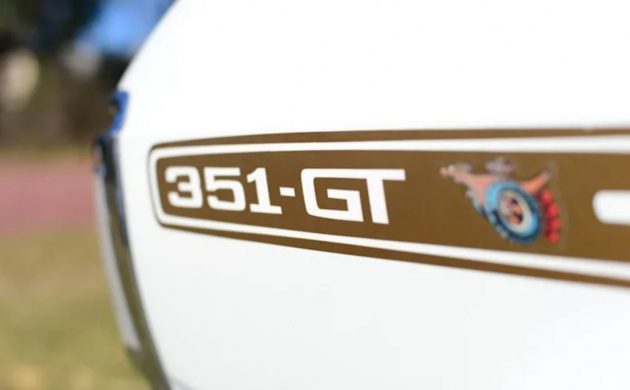

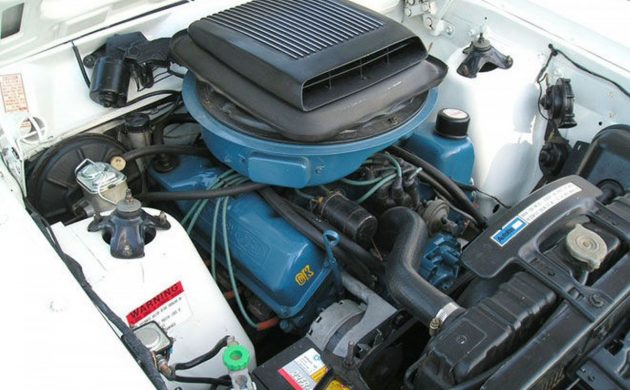
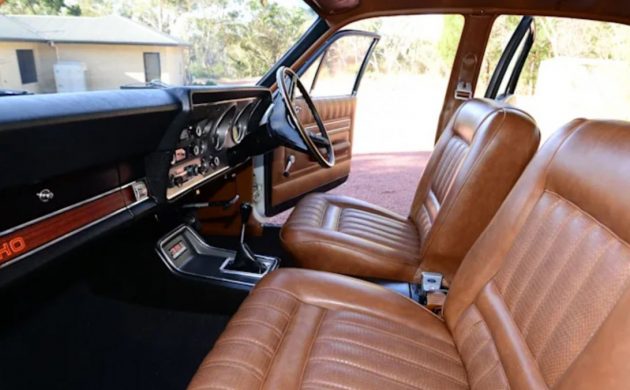
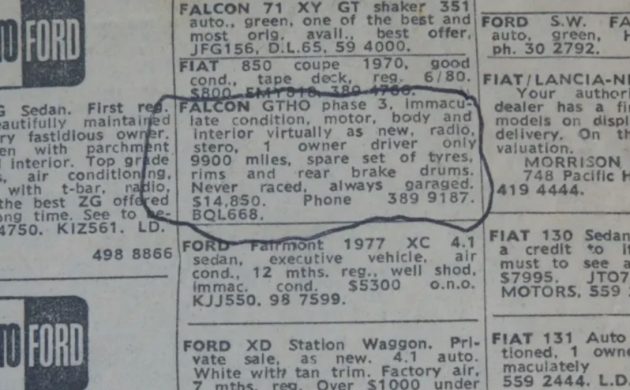
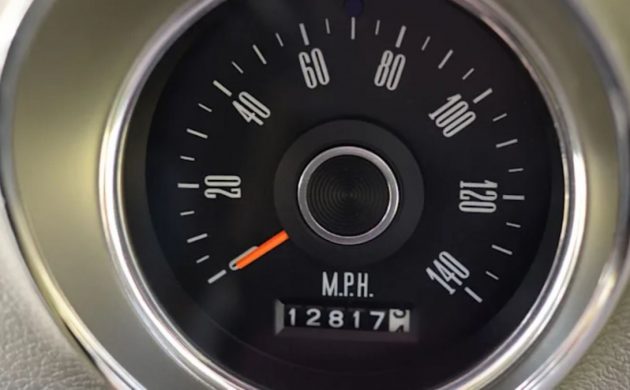


$2,000,000? – And I thought Americans were crazy!
Here in Australia there’s a lot of
new money bogan boomers that would pay silly dollars for the bragging rights and the car that comes with them.
Due to aftermarket part supplies there’s also thousands of identical GTHO clones getting about the streets and the shows, So that makes a car like this really quite common.
So what does that make the Bill Bourke GT worth then, that would be interesting.
According to reports, Ford made 3,500 GTHO’s and there are still 6000 on the roads today, strange but true!
The A9X $1000000? The Falcon V8 Supercar Racer $1000000? and now this GTHO $2000000?
Adam, I enjoy your articles and knowledge but your click-bait headlines are too unrealistic.
It is Ross Vasse, not Adam, who has been a professional valuer of classic and collectible cars for 30 years, who put the possible $2m outcome on this car. Ross has also spent decades compiling a register detailing the history of all 300 1971 XY Falcon GTHO Phase III cars which has sold out before being printed, so his guess on price is far from click-bait.
Very informative and interesting write up on this beast from down under. Being from the US Ive never seen one of these in person, clone or real deal. All about big cubic inches in our old muscle(super) cars but the 351 Cleveland could out-breath them all.
Awesome looking car. If only our American Fords were this interesting. Other than the Mustang II, the F250 truck, and the Maverick, our Fords were poorly built, and hardly interesting cars.
Lol! Wtf are you even talking about???
Mustang II, Maverick and F250 are the most interesting Fords??? My head is spinning now. LOL
Interesting. Is any car/truck built in Australia anymore? The dearly departed Holden Commodore/Chevy SS got my attention. Can still buy Canadian built Chrysler 300 SRTs in Australia….
“Is This 1971 Ford Falcon GTHO Phase III Australia’s First Two Million Dollar Production Car?”
NO!
One thing I have noticed about Australian muscle cars is that many of them are 4 door models. Here in the US the 4 door cars are kind of looked down on and cast aside. I have always wondered why it is different in Australia.
The cost of producing multiple body styles was very cost prohibitive in Australia
Excellent write up Adam.
Rbig18, 4 doors probably popular in Australian an we can trust our kids not to open doors up and runaway, just kidding!
These XY falcons don’t look very aerodynamic do they, wonder how they would do at 150+ at Daytona.
And they said the Charger 500s were not aero enough!
Still the XY is one tough looking vehicle
This is a genuine, rarely driven, XY Phase III and the only one painted Onyx Black. Built by Ford for the Sydney Motor Show to announce the release of the 1971 Phase III. I stood next to this car in 2017 (part of a very private collection) and the owner had already knocked back $2m… if the one in this article gets anywhere near $2m… what this one worth?
The road going Phase III was designed up by Allan Moffat to be the closest thing to a street legal race car possible at the time so with the few modifications allowed for the track it would crush the opposition… and guess what?
As an Aussie, these tarted up Fairmonts with crate motors leave me cold.
Over rated when new, over priced now. When I think if the US muscle or Euro performance cars I could buy for the same coin, I’ll pass on this.
I couldn’t agree with you more. I’ve said it a million times there’s just no comparison between the designs.
And at Bathurst in ’72, they got their *** handed to them. By a 202 CID six.
Google HO on the Hume.
A 140mph speedo wasn’t enough.
Side bar.
My dad owned a phase III when new. He kept snapping engine mounts.
Ford Australia fix? Chain from the block to the chassis.
He traded it in a Fairlane with the phase IV running gear. I saw the needle at 140mph.